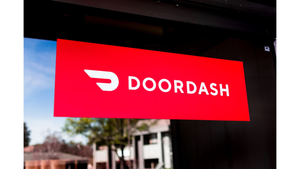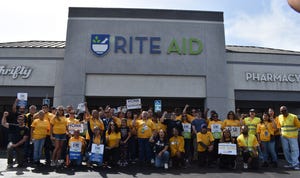Sounding Board: The eyes have it
January 1, 2018
What can retailers learn by literally looking through the eyes of their customers? By Len Lewis If you are in the supermarket one day and see someone wearing headgear that looks like a cross between 3-D glasses and a bombsight, do not be alarmed—it is just a device to analyze what shoppers see, what they buy and maybe how retailers can get them to buy something else. This high-tech research tool monitors the wearer’s eye movements using two miniature cameras strapped to a headband. One camera tracks everything in the shopper’s field of vision, while the other tracks the tiniest movements of the right eye. Then the whole thing is hooked to a digital video recorder. Originally designed for fighter pilots, it was developed in 2002 by eyetracker, a London-based firm that is helping retailers, manufacturers and research firms in Europe—Tesco, Sainsbury, Waitrose, Procter & Gamble and The Nielsen Co. among them—determine the effectiveness of packaging, signage, product placement, websites and advertising. In sum, the entire, and devastatingly complex, consumer decision-making process. If managing director Iain Janes has his way, this state-of-the-art system that tracks shoppers eye movements in milliseconds, will be in the U.S. over the next three to six months. Needless to say, he politely declined to tell me with whom his company might be working, but I have my suspicions. Tracking shopper movements and purchasing preferences is really nothing new. In-store observers, focus groups and surveys (ad nauseam) have been delving into consumer psyches for years with varying degrees of success. But aside from the fact that it is just cool, eyetracker is cutting-edge science that could be extremely useful to retailers and manufacturers. Despite the attention many observers—myself among them—are heaping on small-store retailing these days, supermarkets and big box retailers with upwards of 40,000 items will be the norm rather than the exception in this industry for some time to come. But how successful has the industry been in cutting through the clutter in this visually overloaded environment? Is it any wonder that getting customers engaged in the center store is such a burning issue? Even getting them to shop one entire aisle is a major coup, let alone the whole store. As we all know, this cherry-picking—or “grab-and-snatch,” as Janes puts it—is not good for anyone. And since 70% of shopping decisions are made by consumers in the aisle, getting them to walk through that aisle and analyzing how they see it is a pretty big deal. Focus groups, product testing and exit interviews are all great research methods, but fall short when you want to understand what people are looking at because of the way the eye actually works. In addition, products that get a positive response in focus groups do not necessarily attract the eye on the shelf. Eyetracker breaks down the shopping experience into three stages: macro navigation, which begins when customers walk into a store and get oriented; micro navigation, when they stand in front of an aisle and build their own “shop window” of what interests them (the retail equivalent of the strike zone); and nano navigation, where they actually pick up a product and process information about it. This last stage, as they say, is the moment of truth for every marketer. It is pretty sexy stuff. But is all this necessary? Even Janes concedes it is no silver bullet. Also, the technology works best when wrapped around conventional research such as focus groups. But think of it this way. Researchers in California have determined that the human brain takes in about 40 gigabytes of visual information daily—enough to crash any computer on the planet. Fortunately, or unfortunately, depending on your point of view, we only process 10% to 15% and dump the rest. I am no scientist, but it seems pretty certain that any manufacturer or retailer would like to be in the 10% to 15% group, even if it means redesigning packaging, websites and newspaper ads or rethinking long-held theories about shelf sets. In other words, it follows the old adage that what is unseen is unsold. The question, as with any research, is the integrity of the shopper’s response. In this case, do they act differently in a supermarket when they are wearing eye-tracking devices? It gives new meaning to the phrase “keep your eyes open.” Len Lewis, a regular Grocery Headquarters columnist, is a veteran industry journalist, commentator and editorial director of Lewis Communications, Inc. He is the author of The Trader Joe’s Adventure—Turning a Unique Approach to Business into a Retail and Cultural Phenomenon. He can be reached at [email protected] or at www.lenlewiscommunications.com.
About the Author
You May Also Like




